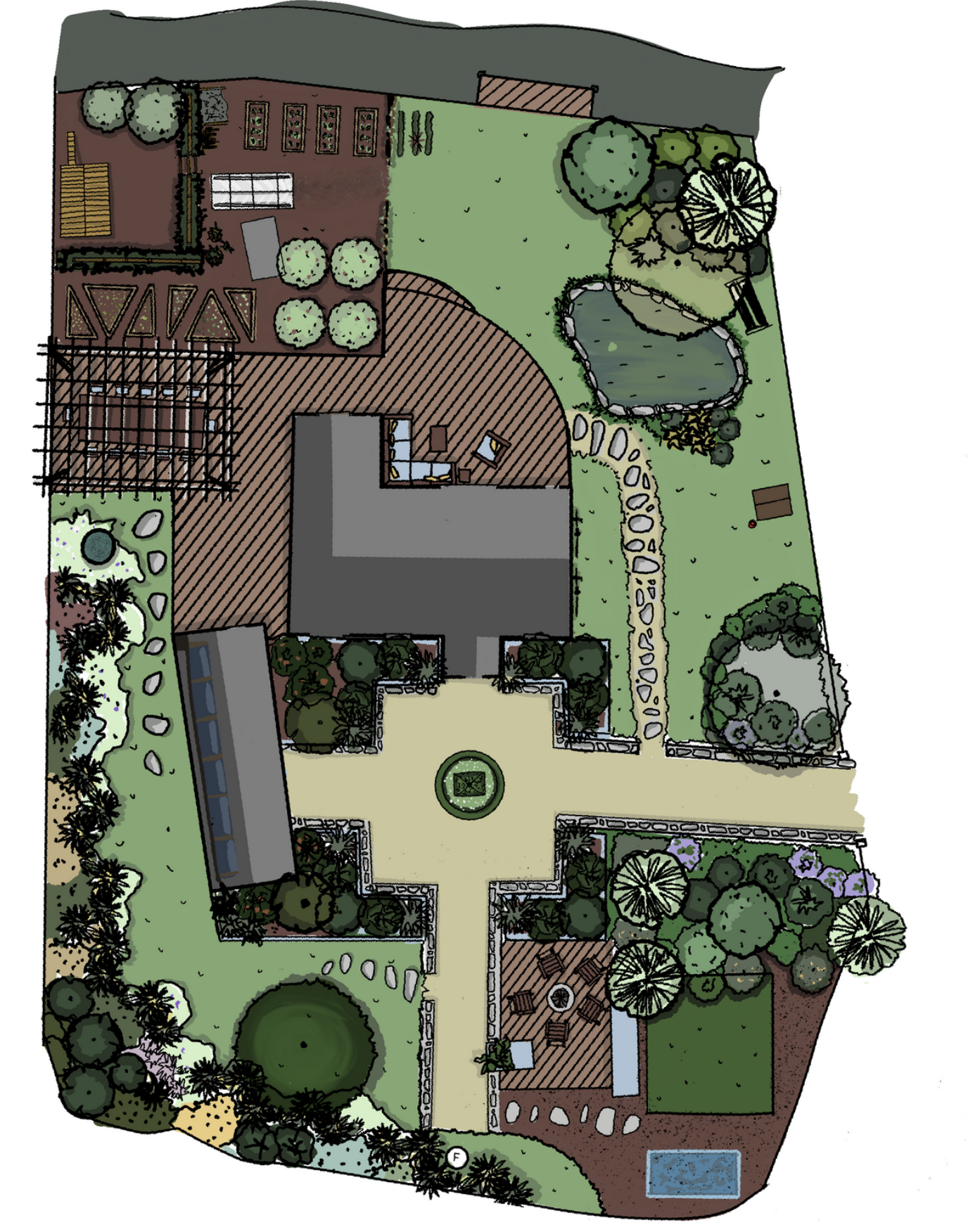Introduction:
This academic project is tailored for an environmentally conscious family seeking a sustainable transformation of their rural property.
Facing challenges such as neutral-to-alkaline soil on a former cattle-grazing field, the design integrates classic methods like seed sewing and composting with advanced technology for self-sustainability and a low carbon footprint.
The family desires a family-friendly garden with space for sports, a vegetable garden, and an outdoor kitchen. This proposal strategically addresses challenges like harsh winds using wooden railway sleepers. The redesigned shed serves as a garage with solar panels, a water butt, and an irrigation system for an edible garden. The addition of a poultry area and a pond enhances sustainability and wildlife attraction.
Outdoor activities, including football and cycling, are accommodated in a partially shaded area with a fire pit. The meadow’s path connects the front and backyard, using permeable and natural ground covers. Natural clay bricks are chosen for patios, and the BBQ/dining area, an extension of the house, features a pergola made of reclaimed wood.
Concept Development:


The proposal aims to strategically provide shelter and minimize this impact. The main hardscape material is wooden railway sleepers, which serve multiple purposes, both visual and functional but intentionally covering just a few areas.

Planting focuses on diversity and informality, embracing a no-dig approach for a coastal feel. Wild areas remain untouched, providing interest and seasonal changes for the family to observe.





